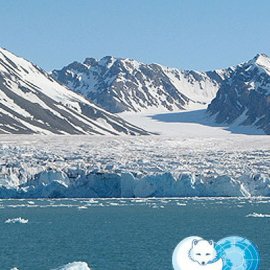The Arctic Council
-
English
-
ListenPause
I’m Peter Neill, Director of the World Ocean Observatory. We speak often on these editions of the conflict between natural resource exploitation and biodiversity protection, at one point an easy relationship until the world economy grew to a level of demand that shifted the balance from infinite to finite supply, from moderate to excessive demand. The ebb and flow is visible on land, for example, in the history of the American “rust belt,” the middle states that flourished as the primary producer of iron and steel, then collapsed in the face of offshore competition and labor costs, now to feel the hope again of revival in the face of the fracking boom producing new supplies of natural gas, indifferent to the negative environmental consequence, that will eventually be exhausted and return these communities to even greater destitution. This conflict underlies the growing controversy and opposition by many to comparable energy driven development in China, Africa, and other developing states with growing financial and social aspirations already enjoyed by the developed world. It seems to be an unstoppable, repeating pattern that will endure regardless of lessons already learned. How do we move beyond this deleterious cycle? If you look to the ocean above latitude 40 degrees north encircling the North Pole, you see an area rich in resources of every kind, home to indigenous peoples, unspoiled by its isolation, but now evermore accessible due the actuality of global warming that has raised temperatures, melted glaciers and sea ice, opened passages and become available to meet the critical global need for energy and water. It is seen by some as a last great wilderness that should be kept forever wild, and by others as a vast new opportunity for exploitation and consumption. We have discussed here before the so-called “new north.” But we have not explored its potential as a laboratory for policy and management in which we can experiment with new structures of governance, new cooperative limits on resource extraction, new protections for extraordinary biodiversity, and new relationships with the communities and peoples who live and work therein. In 1996, through an international declaration formulated in Ottawa, Canada, The Arctic Council was formally established as a high level intergovernmental forum “to provide a means for promoting cooperation, coordination and interaction among the Arctic States, with the involvement of the Arctic Indigenous communities and other Arctic inhabitants on common Arctic issues of sustainable development and environmental protection…” The participating Arctic Council Member States are Canada, Denmark, Finland, Iceland, Norway, the Russian Federation, Sweden, and the United States of America, each of which contributes US $58,000 per year toward a Secretariat budget. The Council has five areas of designated interest: Environment and Climate, including climate change and environmental protection; Biodiversity, including an Arctic Biodiversity Assessment and a Circumpolar Biodiversity Monitoring Program; Oceans, including search and rescue, Arctic Ocean review, emergency preparedness, marine environment, shipping, oil and gas; and Arctic People, including health and well-being, indigenous people needs today, and languages and culture. What is interesting about this of course is the integrated activities that balance needs and demands, plan for outcomes and consequences, and addresses the sustainability requirements of the ecosystem and the people that live there. The activities are structured so that no single demand of any single interest can be imposed at the expense or deterioration of another. The Secretariat for the Council is based in Tromso, Norway, and is charged with managing the activities, organizing the various meetings, producing reports, and executing an annual work-plan that is determined by the council members. One can look at this as a structure designed to protect vested national interests, not unite them, to defend resources, not exploit them responsibly, to control the local citizens, rather than assimilate their needs and values. One can also look upon this as a model structure of governance, based on common interest, sustainability, and community integration. Time will tell if this will create a new mode of international government, corporate, and social behavior, more cooperative than competitive, more planned than unregulated, more progressive and protective than regressive and destructive. Such a demonstration of new conduct might well demonstrate how even on land where old conduct has done its worst we might change our ways for the better. We will discuss these issues, and more, in future editions of World Ocean Radio.
In 1996, the high level intergovernmental Arctic Council was formed to promote cooperation and interaction among the Arctic states. In this episode of World Ocean Radio, host Peter Neill will outline the Council’s areas of interest and will argue that The Arctic Council could, over time, serve as a progressive model by which to develop policies and management, sustainable development, and protections for other ecosystems and their inhabitants.
About World Ocean Radio: Peter Neill, Director of the World Ocean Observatory and host of World Ocean Radio, provides coverage of a broad spectrum of ocean issues from science and education to advocacy and exemplary projects. World Ocean Radio, a project of the World Ocean Observatory, is a weekly series of five-minute audio essays available for syndicated use at no cost by college and community radio stations worldwide.
World Ocean Radio Has Gone Global: A selection of episodes is now available in Portuguese, Spanish, French, and Swahili. For more information, visit http://www.worldoceanobservatory.org/world-ocean-radio-global.
Resources from this episode:
The Arctic Council
- Login to post comments



